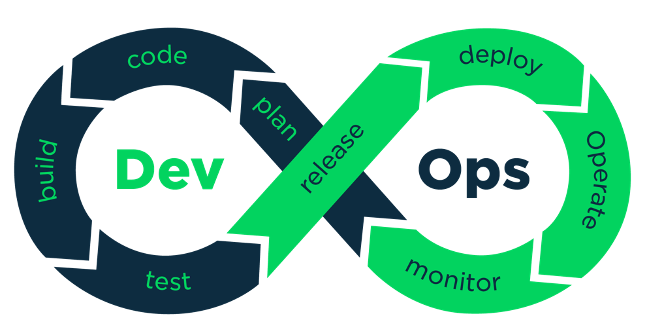In the digital economy, companies must innovate fast, deliver reliably, and continuously adapt. Hence, DevOps is considered the pillar of modern software development and IT operations, helping to fill the gap between development and operations. However, the power of DevOps lies in automating repetitive tasks and standardizing processes so that delivery can move to the faster lane.
DevOps automation involves some tools, scripts, and platforms working to implement key DevOps practices such as integration, testing, deployment, monitoring, infrastructure management, and much more—all masked from the manual intervention of developers. By removing human error and providing for efficiency in workflows, DevOps automation creates a strategic advantage for any company aspiring for faster time-to-market, better quality software, and lower operational risk.
Here are the top 10 benefits businesses reap from DevOps automation and how it has transformed the way contemporary corporations do business.
1. Accelerated Software Delivery
A very obvious advantage is how it quickens the velocity of the development pipeline. Once automated tools start handling build, integration, test, and deployment workflows, development teams can deliver software updates faster than they could before.
When you deploy using automated pipelines, the wait between development and deployment gets minimized. What used to happen in the course of days or sometimes weeks takes place in hours and sometimes minutes. Being faster enables businesses to get new features out there quickly, get across any changes in the market swiftly, and at the same time, stay ahead of those in competition.
Hence, for organizations such as e-commerce, finance, and healthcare, where time-to-market most directly impacts revenue generation and customer satisfaction, quicker delivery becomes an edge over the competition.
2. Improved Deployment Frequency and Agility
In traditional settings, it was the release of software once in a month, or quarterly. Now, it is quite the contrary: changes are deployed by high-performing teams several times a day. This is made possible by means of automation tools, thus enabling Continuous Integration and Continuous Delivery, or in short CI/CD.
As every process is automated from code commits to the production releases, teams have the ability to push out little changes that give them incremental value, instead of making discrete, risky changes in their implementations. This approach of “little and often” lessens the disruptions and, in turn, ensures that users can be continually provided with value.
This thinking is further enabled by giving rise to more frequent innovation. Developers are free to experiment, obtain feedback, and quickly improve upon it—allowing for the improvement of an agile business.
3. Increased Collaboration Between Development and Operations
DevOps is truly about culture. Automation feeds such culture by reducing friction between developers and operations teams. From shared pipelines, dashboards, and infrastructure that is version-controlled, the teams work from the same source of truth.
The teams collaborate on scripts, configurations, and processes with automation—so should be eliminated the classic silos that prevent productivity. This desired transparency and alignment yield faster resolutions, smoother rollouts, and seamless communications with stakeholders.
Tools such as Jenkins, GitHub Actions, GitLab CI/CD, and Azure DevOps allow all stakeholders—from developers to system administrators—to have visibility and be on the same page throughout the whole lifecycle.
4. Reduced Risk of Human Errors
Processes that are manual are highly error-prone. An overlooked configuration setting, a typo in a script, or an update not appropriately tested can mean service outage, security breach, or performance degradation.
Automation stands for consistency and repeatability. Be it provisioning infrastructure in the cloud, setting up the servers, or pushing code in production, these tasks are allowed freedoms to be performed in their manner every single time, thereby minimizing the variance and very much reducing the risk for that very costly error to occur.
Procedures are codified (through Infrastructure as Code, configuration scripts, or automation playbooks) so that teams can inculcate best practices and avoid reinventing the wheel.
5. Enhanced Operational Efficiency and Resource Utilization
DevOps automation frees your teams from mundane, repetitive tasks—such as running tests, updating environments, or monitoring logs—allowing them to focus on higher-value activities like innovation and strategic planning.
For example, a task that once required a sysadmin’s involvement—provisioning new environments—can now be handled instantly through a script or an automated workflow. This reduces bottlenecks and ensures that resources (both human and digital) are used more effectively.
In large enterprises, automated workflows also lead to better resource allocation across multiple teams, services, and departments. Businesses can scale DevOps practices without exponentially increasing their team size.
6. Faster Incident Detection and Recovery
DevOps automation, on the other hand, is all about faster detection, root cause analysis, and recovery through proactive alerting and monitoring systems.
In essence, monitoring tools such as Prometheus, Datadog, or New Relic trace anomalies and metrics automatically. In cases where deployment causes irregular latency spikes or CPU spikes, alerts are sent to engineers in real-time and rollbacks can be immediately initiated.
By integrating failure recovery into the pipeline, the organization will limit downtime and ensure service availability, an essential variable in industries where reliability equates to customer trust and revenue.
7. Consistent and Reliable Environments
One of the big pain points in software development is environmental disparity. Code that runs on a developer’s local box can fail in a different environment like staging or production because configurations do not match. Automation resolves this using Infrastructure as Code (IaC).
IaC tools such as Terraform, Ansible, and CloudFormation enable teams to express infrastructure specifications as code so that environments remain identical throughout dev, test, and production. This eliminates “it worked on my machine” scenarios and guarantees predictability.
Additionally, these infrastructure modifications are version-controlled, reversible, and auditable, enhancing reliability further.
8. Greater Software Quality and More Defect-Free Work
Automation guarantees that testing is embedded at each development life-cycle stage. From integration and unit tests to performance and security tests, automated test suites ensure that all code modifications are verified before hitting production.
This “shift-left” method of testing catches bugs early—when fixes are less expensive to implement—before flawed updates can reach users. Automation also enables tests to run in parallel, accelerating validation and giving developers quick feedback.
Improved testing, along with regular deployment pipelines, produces high-quality and robust software that adheres to business objectives as well as customer requirements.
9. Scalability and Elasticity
As demand increases, businesses need to scale infrastructure and applications seamlessly. Manual scaling is slow and error-prone, especially in cloud environments. Automation enables dynamic provisioning and scaling based on predefined policies.
For example, auto-scaling groups in AWS or horizontal pod autoscaling in Kubernetes automatically adjust resources based on real-time traffic. Combined with IaC, organizations can spin up new instances, clusters, or environments within minutes.
This scalability ensures that services remain performant under load and cost-efficient during low-traffic periods.
10. Cost Savings and Better ROI
While the initial setup of DevOps automation tools may require time and resources, the long-term ROI is significant. Businesses save money by:
- Reducing downtime through faster recovery
- Lowering error rates with automated testing
- Optimizing cloud costs through better resource management
- Minimizing the need for manual intervention
- Accelerating feature delivery, which drives revenue
Furthermore, by enabling small teams to manage large-scale deployments efficiently, automation reduces the need for excessive staffing, helping businesses maintain lean yet effective IT operations.
Final Thoughts
Now that digital services are what make a business successful, DevOps automation is no longer a choice—it’s a requirement. It provides real advantages on all counts: quicker development cycles, greater collaboration, fewer errors, greater scalability, and lower costs.
Companies investing in DevOps automation put themselves in a place to not only survive but thrive in a changing market. Whether a startup is shooting for quick MVP deployments or a large company is handling thousands of deployments per day, there is a real-time and longer-term value in automating DevOps processes.
Adopting DevOps automation as a strategic initiative enables organizations to turn their software delivery pipeline into a competitive strength—agile, resilient, and future-ready.



































